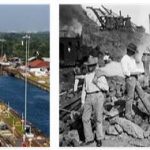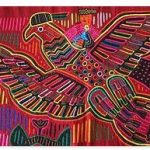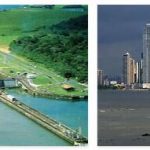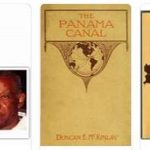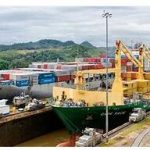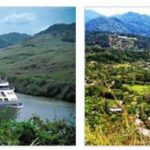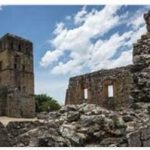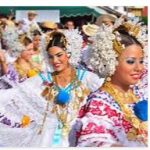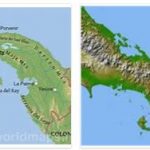HISTORY: US ADMINISTRATION AND CONTROL OF THE CANAL ZONE
After prompt negotiations, formal recognition of the US government arrived (November 6): Secretary of State Hay and Panamanian representative Bunau Varilla signed a treaty in Washington which largely confirmed the provisions of the agreement rejected by Colombia, further agreeing that the administration and control of the planned waterway would be the sole responsibility of the US government. With this heavy mortgage, the young Republic began its life. In 1904 a Constitution was issued and heads of state and governments began to succeed. In 1912 the liberal Belisario Porrás ascended to the presidency: during his mandate, on August 15, 1915, the canal was inaugurated. His successor Ramón M. Valdés declared war on the Central Empires in 1917. However, the advantages of the canal’s availability, which became evident, led to popular pressure for more favorable changes to the 1903 treaty. President Franklin Delano Roosevelt, as part of his “good neighborhood” policy towards Latin America, he decided in 1936 to conclude a new treaty with Panama, which also led to the abolition of the rights to intervene in Panamanian internal affairs provided for in the previous agreement. At the moment the disagreements between the two parties seemed to be overcome, but in 1940, when the nationalist Arnulfo Arias was elected president of the Republic, they returned to manifest themselves. A period of tension ensued, which ended in 1941 with the dismissal of Arias by the Parliamentary Assembly. He was replaced by Ricardo Adolfo de la Guardia, who after Pearl Harbor declared war on Japan and Germany, allowing the United States to militarily occupy some bases located outside the Canal Zone. Their eviction took place only after the conflict was over. But the problem of the canal itself remained on the table. That political climate favored, in 1949, the re-election of Arnulfo Arias as president, but on 9 May 1951 a coup forced him to retire. He was succeeded by Alcibiades Arosemena. The agitation continued. The ruling classes, in agreement with the United States, then (1952) entrusted power to a “strong man”, the head of the National Guard, Colonel José Antonio Remón, who went to Washington to negotiate the revision of the 1936 treaty. The new agreement was signed on January 25, 1955, a few days after Remón’s assassination. The president-elect in 1960, Roberto F. Chiari, reopened the dispute and his successor Marco Antonio Robles obtained a commitment from the United States to recognize Panamanian sovereignty over the Canal Zone. In 1968 Arnulfo Arias returned to be elected president but was again deposed by the military (12 October 1968). The government passed into the hands of a junta led by General Omar Torrijos, head of the National Guard. After a few years of heated controversy with Washington, during Carter’s presidency, relations between the two countries improved with the signing (7 September 1977) of two treaties on the development of the Canal Zone. The first treaty provided for the abolition of the Canal Zone from 1 October 1979, with the transfer of jurisdiction from the United States to the Republic of Panama, a country located in Central America according to localcollegeexplorer, and established the rules for a gradual transfer of management of the canal to Panama by 31 December 1999. The the second treaty instead established that both countries undertook to guarantee the neutrality of the canal in times of peace and war.
HISTORY: FROM MILITARY REGIMES TO DEMOCRACY
On 11 October 1978 the newly elected (August) National Assembly brought Aristides Royo, former Minister of Education, to the presidency. Torrijos left the post of head of the government and kept that of head of the National Guard until July 1981. Party activity, suspended in 1969, was restored. However, the new president was forced to resign (1982) by the head of the National Guard, Ruben Darío Paredes who, by setting up Ricardo de la Esperiella to the highest office, imparted a more conservative policy to the country. The deterioration of the political situation, however, experienced a rapid evolution in the second half of the Eighties, when the disagreements already manifested with the United States deepened, until reaching the break between them and the “strong man” of the country, General MA (head of the Armed Forces), accused by the US of international drug trafficking (complicity with the Medellín cartel). However, both the geopolitical role of Panama and its recent diplomatic alliances (proximity to Cuba and Nicaragua, with the function of transit country for arms supplies) and the internal equilibrium as the release on the Canal Zone. As pressure from the United States steadily increased, President E. Arturo della Valle (in office since 1985) attempted the dismissal of Noriega (February 1989), but encountered the opposition of the army which forced him to resign from his office. temporarily passed to M. Solis Palma; the cancellation of the subsequent presidential elections in May, Bush senior the propitious occasion for the implementation of a decisive military operation aimed at the overthrow of the regime and the capture of General Noriega (December 20). Turned out to be less easy than expected, the invasion still achieved its objectives, coming to an end in a couple of weeks, and allowed the establishment of a democratic government chaired by G. Endara (leader of the multi-party formation Alianza Democrática de Oposición Civilista, presented as an opposition party in the May consultation). The local bourgeoisie, expatriate since 1968, could therefore return to the country, while the United States regained its traditional role, not without causing discontent in some of the population. A military coup led by supporters of the past regime was foiled in October 1991, on 26 December of the same year an amendment to the Constitution sanctioned the abolition of the Armed Forces. In 1994 the presidential elections marked the strong affirmation of Ernesto Pérez Balladares of the Partido Revolucionario Democratico (PRD), who gave birth to a national coalition government. But in the subsequent 1999 presidential election EP Balladares was defeated by Mireya Moscoso, widow of Arnulfo Arias and leader of the reformist party. At the end of the same year, in implementation of the 1977 treaty, the US left the Canal Zone. The 2004 presidential elections were won by Martín Torrijos Espino, son of General Omar Torrijos. In 2006, a popular referendum was held which approved the enlargement of the canal. In 2009 the Italian-born entrepreneur Ricardo Martinelli won the presidential elections, while in 2014 Juan Carlos Varela won.

